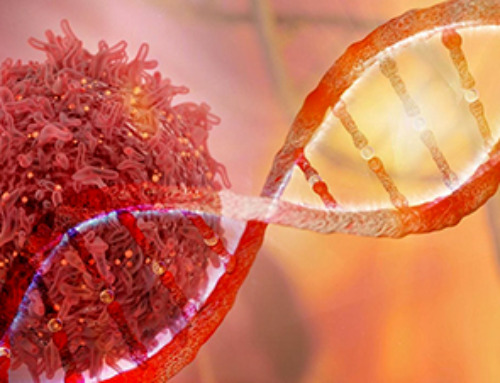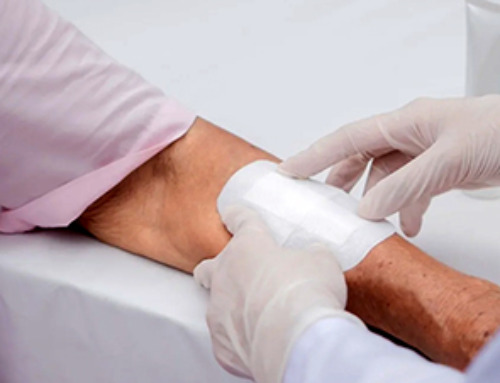Chronic kidney disease (CKD) is considered to be a global health crisis. A review on this topic has been submitted to the journal, Biomaterials and Biosystems, outlining the potential of using nanomaterials for the diagnosis and treatment of diabetic kidney disease (DKD).
Diabetic Kidney Disease
There are approximately 34.2 million people with diabetes within the U.S. and with this number steadily increasing, this disorder has been a focal point for innovative researchers that aim to increase the efficacy of diagnostics and therapeutics.
Diabetes can cause severe health problems such as diabetic kidney disease (DKD) as well as end-stage kidney disease. Half of the population that has been diagnosed with type 2 diabetes mellitus as well as a third of patients with type 1 diabetes diagnosis have been estimated to develop kidney disease; these health statistics demonstrate the need for advanced research in this area.
This type of diabetes associated with kidney disease highlights patients with an increased risk for further health complications such as increased aging, hypertension, and even possible early mortality.
Currently, the assessment of renal fibrosis for the indication of kidney function is carried out through a kidney biopsy, which has been the gold standard for this disorder. The use of this procedure followed by a histopathological evaluation may not be the most effective method as it is invasive and only assesses 0.01% of the tissue and therefore is not representative of results from a comprehensive insight into the entire kidney.
Diagnostic errors that occur in this procedure have led to a limited percentage of patients undergoing a biopsy. Additionally, the limitations of therapeutics for this disease are also a health concern. These aim to suppress the renin-angiotensin system for controlling hypertension; however, this can also result in hypoglycaemia and other adverse effects.
The use of nanotechnology for the advancement of theranostics has become a key driver in developing innovative approaches that can be used for overcoming limitations within current standards of practice and procedures.
Nanotechnology Research Within Diabetes
The use of nanoparticles within biomedical research has been revolutionary for developing innovative diagnostic and therapeutic approaches. This is due to the benefits of being within a nanoscale, which includes properties such as a high surface area and high reactivity and increased targetability to areas of concern.
While there has been research outlining the challenges of nanotechnology for the application of diabetes due to poor stability in vivo and inefficient targeting within the kidneys, there have also been pre-clinical studies highlighting the potential of this innovative approach.
Imaging and Drug Delivery
The current standard imaging technique for detecting DKD includes the use of CT and MRI scans; however, these require a high contrast ratio to differentiate between the structures within the body. The use of nanotechnology can be beneficial for this purpose and can be used to improve the imaging of kidneys and lead to a diagnosis of diabetic kidney disease.
Nanoparticles can be used as enhancement tools for imaging, enabling them to be an alternative to potentially toxic contrast agents that are used within the body. Gold nanoparticles have been favored within the literature for enhancing the imaging of CT scans. An example of this is anti-collagen-I antibody conjugated gold nanoparticles that have been used in mice without causing adverse side effects such as renal damage – this illustrates its benefit and potential within a clinical setting.
Gold nanoparticles can also be used as an electrochemical biosensor for detecting abnormal albumin levels, which can be indicative of early kidney damage. The use of nanotechnology in this manner can be useful as early diagnoses can result in more effective management of the disease, with targeted treatment and reduced morbidity and mortality.
While nanotechnology can be used for diagnostic applications in diabetes, it can also be used for treatments, with nanoparticles employed as drug carriers. The surface modification of nanoparticles has made this concept a promising notion for researchers that can ensure particles are precisely delivering drugs to areas of concern, such as the kidneys, for enhanced efficacy of treatments. This also ensures that healthy tissue is not being affected by the drug, which can avoid other health complications.
Future Outlook
Nanotechnology has shown immense benefit with versatile use within a range of applications, and this has furthered their advancement for different disorders and diseases such as diabetic kidney disease.
With diabetes mellitus being a significant concern for public health, both patients and healthcare systems have been struggling to manage the health complications that can arise as a result.
The use of nanotechnology can aid in theranostics, with nanoparticles being potentially used for both diagnostic as well as therapeutic purposes. This can aid in increased efficacy in diagnoses without the use of invasive procedures such as biopsies and targeted treatments that can decrease systemic effects within patients.
News
AI Is Overheating. This New Technology Could Be the Fix
Engineers have developed a passive evaporative cooling membrane that dramatically improves heat removal for electronics and data centers Engineers at the University of California San Diego have created an innovative cooling system designed to greatly enhance [...]
New nanomedicine wipes out leukemia in animal study
In a promising advance for cancer treatment, Northwestern University scientists have re-engineered the molecular structure of a common chemotherapy drug, making it dramatically more soluble and effective and less toxic. In the new study, [...]
Mystery Solved: Scientists Find Cause for Unexplained, Deadly Diseases
A study reveals that a protein called RPA is essential for maintaining chromosome stability by stimulating telomerase. New findings from the University of Wisconsin-Madison suggest that problems with a key protein that helps preserve chromosome stability [...]
Nanotech Blocks Infection and Speed Up Chronic Wound Recovery
A new nanotech-based formulation using quercetin and omega-3 fatty acids shows promise in halting bacterial biofilms and boosting skin cell repair. Scientists have developed a nanotechnology-based treatment to fight bacterial biofilms in wound infections. The [...]
Researchers propose five key questions for effective adoption of AI in clinical practice
While Artificial Intelligence (AI) can be a powerful tool that physicians can use to help diagnose their patients and has great potential to improve accuracy, efficiency and patient safety, it has its drawbacks. It [...]
Advancements and clinical translation of intelligent nanodrugs for breast cancer treatment
A comprehensive review in "Biofunct. Mater." meticulously details the most recent advancements and clinical translation of intelligent nanodrugs for breast cancer treatment. This paper presents an exhaustive overview of subtype-specific nanostrategies, the clinical benefits [...]
It’s Not “All in Your Head”: Scientists Develop Revolutionary Blood Test for Chronic Fatigue Syndrome
A 96% accurate blood test for ME/CFS could transform diagnosis and pave the way for future long COVID detection. Researchers from the University of East Anglia and Oxford Biodynamics have created a highly accurate [...]
How Far Can the Body Go? Scientists Find the Ultimate Limit of Human Endurance
Even the most elite endurance athletes can’t outrun biology. A new study finds that humans hit a metabolic ceiling at about 2.5 times their resting energy burn. When ultra-runners take on races that last [...]
World’s Rivers “Overdosing” on Human Antibiotics, Study Finds
Researchers estimate that approximately 8,500 tons of antibiotics enter river systems each year after passing through the human body and wastewater treatment processes. Rivers spanning millions of kilometers across the globe are contaminated with [...]
Yale Scientists Solve a Century-Old Brain Wave Mystery
Yale scientists traced gamma brain waves to thalamus-cortex interactions. The discovery could reveal how brain rhythms shape perception and disease. For more than a century, scientists have observed rhythmic waves of synchronized neuronal activity [...]
Can introducing peanuts early prevent allergies? Real-world data confirms it helps
New evidence from a large U.S. primary care network shows that early peanut introduction, endorsed in 2015 and 2017 guidelines, was followed by a marked decline in clinician-diagnosed peanut and overall food allergies among [...]
Nanoparticle blueprints reveal path to smarter medicines
Lipid nanoparticles (LNPs) are the delivery vehicles of modern medicine, carrying cancer drugs, gene therapies and vaccines into cells. Until recently, many scientists assumed that all LNPs followed more or less the same blueprint, [...]
How nanomedicine and AI are teaming up to tackle neurodegenerative diseases
When I first realized the scale of the challenge posed by neurodegenerative diseases, such as Alzheimer's, Parkinson's disease and amyotrophic lateral sclerosis (ALS), I felt simultaneously humbled and motivated. These disorders are not caused [...]
Self-Organizing Light Could Transform Computing and Communications
USC engineers have demonstrated a new kind of optical device that lets light organize its own route using the principles of thermodynamics. Instead of relying on switches or digital control, the light finds its own [...]
Groundbreaking New Way of Measuring Blood Pressure Could Save Thousands of Lives
A new method that improves the accuracy of interpreting blood pressure measurements taken at the ankle could be vital for individuals who are unable to have their blood pressure measured on the arm. A newly developed [...]
Scientist tackles key roadblock for AI in drug discovery
The drug development pipeline is a costly and lengthy process. Identifying high-quality "hit" compounds—those with high potency, selectivity, and favorable metabolic properties—at the earliest stages is important for reducing cost and accelerating the path [...]





















